Name Eugene Bullard | Years of service 1914–1919, 1940 | |
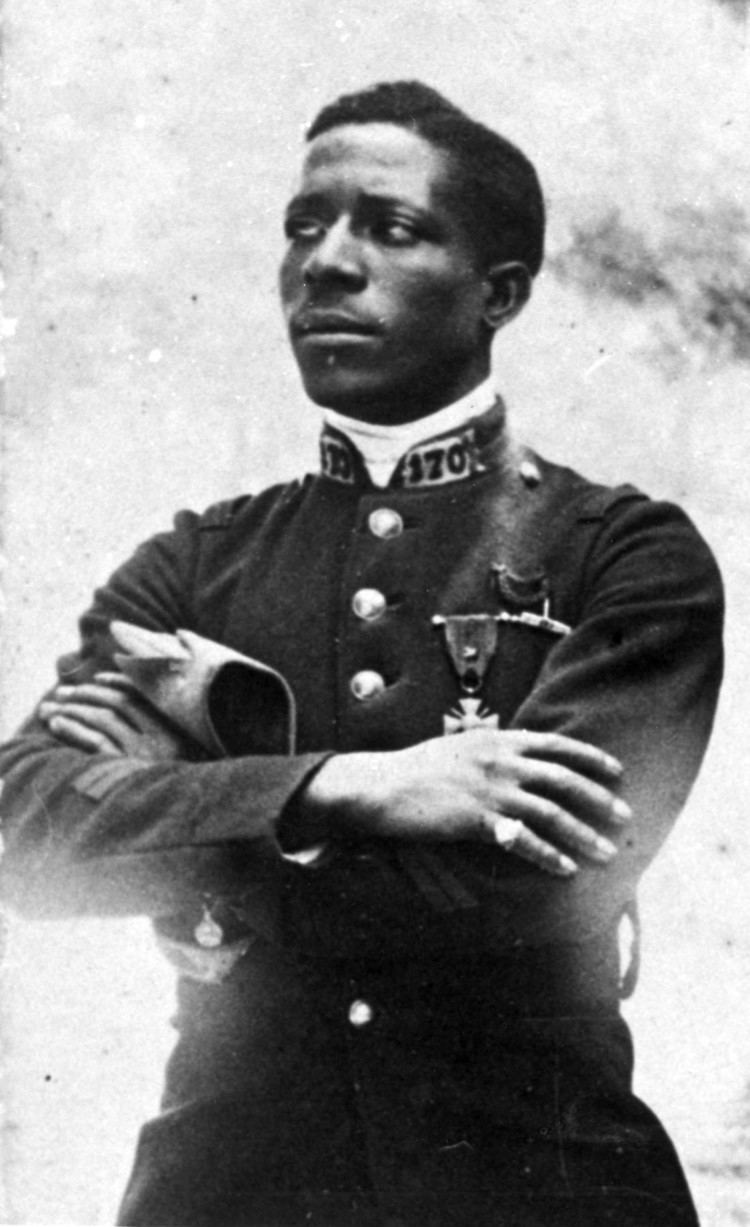 | ||
Buried at Flushing Cemetery (40°45′6″N 73°47′58″W / 40.75167°N 73.79944°W / 40.75167; -73.79944Coordinates: 40°45′6″N 73°47′58″W / 40.75167°N 73.79944°W / 40.75167; -73.79944) Battles/wars World War IWorld War II Awards Legion d'honneurMedaille militaireCroix de guerreCroix de guerreCroix du combattant volontaire 1914-1918Insigne des blesses militairesMedaille Interalliee 1914–1918Medaille commemorative de la guerre 1914-1918Medaille commemorative de la guerre 1939–1945Insignia for the Military Wounded Died October 12, 1961, New York City, New York, United States Children Jacqueline Bullard, Lolita Bullard Service/branch | ||
Nickname(s) Black Swallow of Death | ||
Eugene bullard digital storytelling
Eugene Jacques Bullard (9 October 1895 – 12 October 1961), born Eugene James Bullard, was the first African-American military pilot. His life has been surrounded by many legends. However, Bullard, who flew for France, was unquestionably one of the few black combat pilots during World War I, along with the Ottoman Empire's Ahmet Ali Çelikten.
Contents
- Eugene bullard digital storytelling
- WWI Eugene Jacques Bullard First African American aviator to serve in a war
- Early life
- Marching Regiment of the Foreign Legion RMLE
- Aviation
- After World War I
- In Paris
- Volunteer combatant
- In New York City
- Peekskill Riots
- French Honorific Homage
- Later life
- Legacy
- Honours and awards
- References
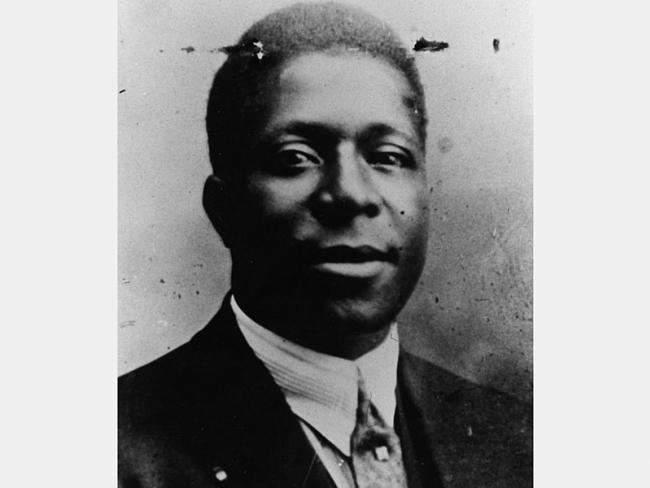
WWI Eugene Jacques Bullard - First African-American aviator to serve in a war
Early life
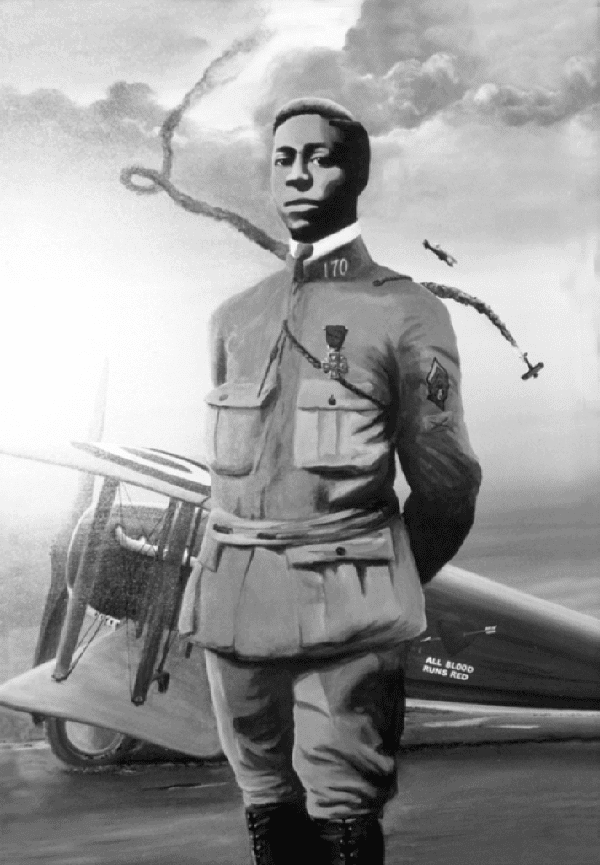
Bullard was born in Columbus, Georgia, the seventh of ten children born to William (Octave) Bullard, a black man who was from Martinique, and Josephine ("Yokalee") Thomas, an indigenous Creek woman. His father's ancestors had been enslaved in Haiti by French refugees who later fled during the Haitian Revolution, which abolished slavery. Bullard's ancestors left the Caribbean and reached the United States and took refuge with the Creek Indians.
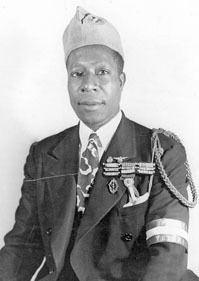
Bullard was a student at the Twenty-eighth Street School from 1901 to 1906. As a teenager, he stowed away on a ship bound for Scotland, hoping to escape racial discrimination. (He later claimed to have witnessed his father's narrow escape from lynching). Bullard arrived at Aberdeen and made his way south to Glasgow. On a visit to Paris, he decided to settle in France. He became a boxer in Paris and also worked in a music hall.
Marching Regiment of the Foreign Legion - R.M.L.E
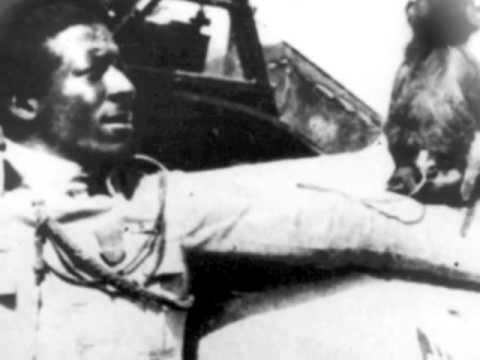
World War I began in August 1914, and on October 19, 1914, Bullard enlisted and was assigned to the third Marching Regiment of the Foreign Legion as foreign volunteers were allowed only to serve in the French Foreign Legion.
By 1915, Bullard was a machine gunner and saw combat on the Somme front in Picardy. In May and June, he was at Artois, and in the fall of that year fought in a second Champagne offensive (25 September – 6 November 1915) along the Meuse river. He was assigned to the 3rd Marching Regiment of the 1st Foreign Regiment. On July 13, he joined the 2nd Marching Regiment of the 1st Foreign Regiment and also served with the 170th French Infantry Regiment (French: 170e Régiment d'Infanterie Française) other known as « hirondelles noires de la mort ». The 2nd Marching Regiment of the 1st Foreign Regiment and the 2nd Marching Regiment of the 2nd Foreign Regiment were serving as part of the 1st Moroccan Division. Commanded initially by Hubert Lyautey, a Resident-General of Morocco, at the outbreak of World War I, the division was a mix of the Metropolitan and Colonial French troops, including Legionnaires, zouaves and tirailleurs. Towards the end of the war, the 1st Moroccan Division became one of the most decorated units in the French Army. The Foreign Legion suffered high casualties in 1915. It started the year with 21,887 soldiers, NCOs and officers, and ended with 10,683. As a result, the Foreign Legion units fighting on the Western front were put in reserve for reinforcement and reorganization. On November 11, 1915, 3,316 survivors from the 1e and the 2e Etranger were merged into one unit – the Régiment de Marche de la Légion étrangère R.M.L.E, which in 1920 became the 3rd Foreign Regiment of the French Foreign Legion. Bullard participated in the combats on the Somme, Champagne, and Verdun where he was severely wounded on March 5, 1916.
As for Americans and other volunteers, they were allowed to transfer to the Metropolitan French Army units, including the 170th French Infantry Regiment (French: 170e Régiment d'Infanterie Française). The 170th had a reputation of crack troops being nicknamed Les Hirondelles de la Mort, or The Swallows of Death. Bullard opted to serve in the 170th Infantry Regiment and the 170 military insignia is displayed on his uniform collar. In the beginning of 1916, the 170th Infantry along with the 48th Infantry Division (French: 48e Division d'Infanterie) to which the regiment belonged from February 1915 to December 1916, was sent to Verdun. During convalescence, Bullard was cited for acts of valor at the orders of the regiment on July 3, 1917, and was awarded the croix de guerre.
Aviation
While serving with the 170th Infantry, Bullard was seriously wounded in action in March 1916 at the Battle of Verdun. After recovering, he volunteered on October 2, 1916 for the French Air Service (French: Aéronautique Militaire) as an air gunner. He was accepted and went through training at the Aerial Gunnery School in Cazaux, Gironde. Following this, he went through his initial flight training at Châteauroux and Avord, and he received pilot's license number 6950 from the Aéro-Club de France on May 5, 1917. Like many other American aviators, Bullard hoped to join the famous squadron Escadrille Americaine N.124, the Lafayette Escadrille, but after enrolling 38 American pilots in spring and summer of 1916, it stopped accepting applicants. After further training at Avord, Bullard joined 269 American aviators at the Lafayette Flying Corps on November 15, 1916, which were a designation rather than a unit. American volunteers flew with French pilots in different pursuit and bomber/reconnaissance aero squadrons on the Western Front. Edmund L. Gros, who facilitated the incorporation of American pilots in the French Air Service, listed in the October 1917 issue of Flying, an official publication of the Aero Club of America, Bullard's name is in the member roster of the Lafayette Flying Corps.
On June 28, 1917, Bullard was promoted to corporal. On August 27, he was assigned to the Escadrille N.93 (French: Escadrille SPA 93) based at Beauzée-sur-Aire south of Verdun, where he stayed until September 13. The squadron was equipped with Nieuport and Spad aircraft that displayed a flying duck as the squadron insignia. Bullard's service record also includes the aero Squadron N.85 (French: Escadrille SPA 85), September 13, 1917 – November 11, 1917, which had a bull insignia. He took part in over twenty air combat missions, and he is sometimes credited with shooting down one or two German aircraft (sources differ). However, the French authorities could not confirm Bullard's victories.
When the United States entered the war, the United States Army Air Service convened a medical board to recruit Americans serving in the Lafayette Flying Corps for the Air Service of the American Expeditionary Forces. Bullard went through the medical examination, but he was not accepted, as only white pilots were allowed to serve. Some time later, while on a short break from duty in Paris, Bullard allegedly got into an argument with a French commissioned officer and was punished by being transferred to the service battalion of the 170th in January 1918. He served beyond the Armistice, not being discharged until October 24, 1919.
After World War I
For his World War I service, the French government awarded Bullard the Croix de guerre, Médaille militaire, Croix du combattant volontaire 1914–1918, and Médaille de Verdun, along with several others. After his discharge, Bullard returned again to Paris.
In Paris
Bullard found work as a drummer and a nightclub manager at "Le Grand Duc", and he eventually became the owner of his own nightclub, "L'Escadrille". In 1923 he married Marcelle Straumann, from a wealthy family, but this ended in divorce in 1935, with Bullard gaining custody of their two surviving children, Jacqueline and Lolita. As a popular jazz venue, "Le Grand Duc" gained him many famous friends, including Josephine Baker, Louis Armstrong, Langston Hughes and French flying ace Charles Nungesser. When World War II began in September 1939, Bullard, who also spoke German, agreed to a request from the French government to spy on the German citizens who still frequented his nightclub.
Volunteer combatant
Following the German invasion of France in May 1940, Bullard volunteered and served with the 51st Infantry Regiment (French: 51e Régiment d'Infanterie) in defending Orléans on June 15, 1940. During his service, he met an officer whom he knew from Verdun. Bullard was wounded, but he escaped to neutral Spain, and in July 1940 he returned to the United States.
In New York City
Bullard spent some time in a New York hospital and never fully recovered from his wound. Moreover, he found the fame he enjoyed in France had not followed him to the United States. He worked as a perfume salesman, a security guard, and as an interpreter for Louis Armstrong, but a back injury severely restricted him. In 1945, he attempted to regain his nightclub in Paris, but it had been destroyed during the war. He received a financial settlement from the French government and was able to buy an apartment in Harlem, New York City.
Peekskill Riots
In 1949, a concert held by Black entertainer and activist Paul Robeson in Peekskill, New York to benefit the Civil Rights Congress resulted in the Peekskill Riots. These were caused in part by members of the local Veterans of Foreign Wars and American Legion chapters, who considered Robeson a communist sympathizer. The concert was scheduled to take place on August 27 in Lakeland Acres, north of Peekskill. Before Robeson arrived, however, a mob attacked the concert-goers with baseball bats and stones. Thirteen people were seriously injured before police put an end to it. The concert was then postponed until September 4. The rescheduled concert took place without incident, but as concert-goers drove away, they passed through long lines of hostile locals, who threw rocks through their windshields.
Eugene Bullard was among those attacked after the concert. He was knocked to the ground and beaten by an angry mob, which included members of the state and local law enforcement. The attack was captured on film and can be seen in the 1970s documentary The Tallest Tree in Our Forest and the Oscar-winning documentary narrated by Sidney Poitier, Paul Robeson: Tribute to an Artist. None of the assailants was ever prosecuted. Graphic pictures of Eugene Bullard being beaten by two policemen, a state trooper, and a concert goer were published in Susan Robeson's biography of her grandfather, The Whole World in His Hands: a Pictorial Biography of Paul Robeson.
French Honorific Homage
In 1954, the French Government invited Bullard to Paris to help rekindle the everlasting flame at the Tomb of the Unknown Soldier under the Arc de Triomphe. In 1959 he was made a Chevalier (Knight) of the Légion d'honneur by général Charles de Gaulle who made reference to Bullard as a « véritable héros français » ("True french hero", in english).
Later life
In the 1950s, Bullard was a relative stranger in his own homeland. His daughters had married, and he lived alone in his apartment, which was decorated with pictures of his famous friends and a framed case containing his fifteen French war medals. His final job was as an elevator operator at the Rockefeller Center, where his fame as the "Black Swallow of Death" was unknown.
On December 22, 1959, he was interviewed on NBC's Today Show by Dave Garroway and received hundreds of letters from viewers. Bullard wore his elevator operator uniform during the interview.
Eugene Bullard died in New York City of stomach cancer on October 12, 1961 at age 66. He was buried with military honors in the French War Veterans' section of Flushing Cemetery in the New York City borough of Queens.
Legacy
Eugene Bullard received fifteen decorations from the government of France. He was made a knight of the Legion of Honor, France's most coveted award. He also was awarded the Médaille militaire, another high military distinction.
In 1972, Bullard's exploits as a pilot were retold in a biography, The Black Swallow of Death. Bullard is also the subject of the nonfiction young adult memoir Eugene Bullard: World's First Black Fighter Pilot by Larry Greenly.
On August 23, 1994, thirty-three years after his death, and seventy-seven years to the day after the physical that should have allowed him to fly for his own country, Eugene Bullard was posthumously commissioned a Second Lieutenant in the United States Air Force.
The 2006 movie Flyboys loosely portrayed Bullard and his comrades in World War I.
In 2012–2014 the French writer Claude Ribbe wrote a book on Eugene Bullard and made a television documentary.
Honours and awards
1st row :
2nd row :
3rd row :
4th row :
Note – Bullard was posthumously eligible for the World War I Victory Medal (United States) as he was posthumously commissioned an officer in the United States Army with a date of rank which fell during the eligibility period of the medal.
